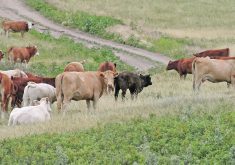Many of us suffer from a superiority complex when putting wildlife conservation into a historical perspective.
We see our not-so-distant ancestors pillaging the natural world for fun and profit while we relax on the side of the angels.
The fate of North America’s vast bison herds may shoulder some of the responsibility.
It’s estimated that more than 60 million of the great beasts roamed the plains in the late 1700s, and many of us can remember reading stories of early explorers having to wait for hours or even days to let a herd pass by.
Read Also

Growth plates are instrumental in shaping a horse’s life
Young horse training plans and workloads must match their skeletal development. Failing to plan around growth plates can create lifelong physical problems.
And yet, by the end of the 1880s, the species had been reduced to 500 animals — almost in the blink of an eye.
I can remember reading accounts as a kid of buffalo hunters using new high-powered rifles to kill bison by the hundreds.
Railroads actually advertised “hunting by rail,” and when trains came upon large herds, men on board would fire from the cars’ roofs and windows. Hundreds of animals would be left to rot where they died.
These are powerful images, and it’s no wonder that a lot of us are tempted to feel that a desire to protect wildlife is not something we share with our forefathers.
However, this isn’t completely true.
In the case of North America’s bison catastrophe, within years of near extinction, conservationists were already beginning successful efforts to pull the species back from the brink.
All of this came to mind recently while reading an article that was published in the Farmer’s Advocate in May 1920.
The writer was railing against farmers who were too quick to shoot birds because they might be eating their precious tree fruit.
Birds eat so many damaging insects, according to the article, that they must be considered “unpaid farm hands.” As a result, indiscriminate killing of this agricultural labour force was foolhardy.
The writer didn’t just take aim at trigger-happy farmers. Also coming under fire were women who followed the fashion of the day by wearing hats decorated with bird feathers.
As well, a story was told of “foreigners making up construction gangs along the railway route in northern Ontario shooting and cooking songbirds.”
The bottom line in this 100-year-old article was that people needed to do everything possible to protect these important feathered friends — and that’s not a whole lot different from today.















